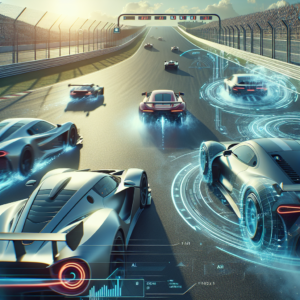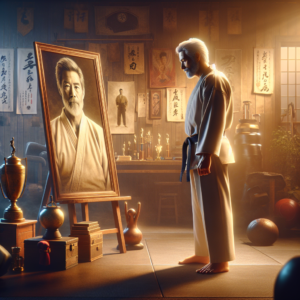US Appeals Court Rejects Copyrights for AI-Generated Art Lacking ‘Human’ Creator
In a groundbreaking decision, a U.S. appeals court has ruled that artworks generated by artificial intelligence (AI) cannot be granted copyright protection if there is no human creator involved in the process. This ruling, which stems from a case involving the AI-created art piece, raises critical questions about the intersection of technology, creativity, and intellectual property law.
The Case Background
The case that brought this issue to the forefront centered on an artist who sought to copyright a piece generated entirely by an artificial intelligence program. The artist argued that the unique algorithm and coding involved in the creation of the piece warranted copyright protection. However, the court disagreed, emphasizing that copyright law is fundamentally predicated on the concept of “human authorship.”
The decision aligns with the traditional understanding that copyright is intended to protect the rights of human creators, ensuring they receive recognition and remuneration for their work. As technology advances, the definition of “creativity” and the role of human input in the art creation process are increasingly being called into question.
The Rationale Behind the Ruling
The court’s ruling is based on the premise that for a work to be eligible for copyright, it must possess a human element—something that the AI-generated art lacked. The judges pointed out that while AI can produce stunning visuals, it does so by following pre-established algorithms and data input by humans, thereby lacking the intrinsic qualities of human creativity.
This decision highlights the ongoing debate about the ownership of AI-generated content. If an artwork is created by a machine without any input from a human artist, does it qualify as a product of individual creativity? The court’s ruling suggests that without a human touch, AI-generated art cannot hold the same status as traditional artistic works.
Implications for Artists and the Art World
The implications of this ruling extend far beyond the confines of a single case. As AI technology continues to evolve and become more integrated into the creative process, artists and legal professionals must grapple with the evolving landscape of copyright law. This ruling sets a significant precedent that may influence how future cases involving AI-generated works are adjudicated.
For artists, the decision raises concerns regarding the protection of their rights in a world increasingly dominated by artificial intelligence. Many artists are already experimenting with AI tools to enhance their creative processes, but this ruling might deter some from using such technology due to fears of losing ownership over their works.
Moreover, the ruling may also have repercussions for the broader art market, particularly as AI-generated artworks become more popular and commercially viable. Collectors and buyers may hesitate to invest in AI art if its copyright status remains ambiguous or if it is not adequately protected under existing laws.
Challenges in Defining ‘Creativity’
At the heart of the ruling lies a complex question: What constitutes creativity? The traditional definition has revolved around the notion of human experience, emotion, and intention—elements that many argue are absent in the works produced by AI. However, as AI systems become more sophisticated and capable of generating works that resonate with audiences, the boundaries of creativity may need to be reevaluated.
Some experts argue that AI possesses a form of creativity, albeit one that is fundamentally different from human creativity. AI can analyze vast amounts of data, identify patterns, and generate outputs that reflect artistic styles and trends. While these creations may lack the personal touch of a human artist, they can still evoke emotions and provoke thought, challenging our understanding of what art is and can be.
Future of Copyright Law in the Age of AI
This ruling serves as a wake-up call for lawmakers, artists, and technology developers to address the gaps in copyright law as it pertains to AI-generated works. As AI continues to advance, the legal framework governing intellectual property may need significant reform to adequately protect both human creators and the burgeoning field of AI-generated content.
Potential reforms could include the establishment of new categories of copyright specifically tailored to address works created by AI, ensuring that artists who collaborate with AI tools retain ownership of their outputs. Additionally, discussions surrounding the ethical implications of AI-generated art must be prioritized, focusing on how to respect both human creativity and technological innovation.
Conclusion
The U.S. appeals court’s decision to reject copyrights for AI-generated art lacking a human creator signifies a pivotal moment in the intersection of technology and creativity. As the world embraces the capabilities of artificial intelligence, the need for clear and comprehensive copyright laws has never been more pressing.
While this ruling may present challenges for artists and the art market, it also opens up opportunities for dialogue about the nature of creativity and the role of technology in shaping the future of artistic expression. As we navigate this brave new world, it is crucial for all stakeholders to engage in meaningful discussions about the implications of AI on the creative landscape, ensuring that the rights of human creators are preserved while also embracing the possibilities that technology has to offer.
As we look to the future, one thing is clear: the conversation surrounding copyright and AI-generated art is far from over, and it will undoubtedly evolve as our understanding of creativity and technology continues to grow.



